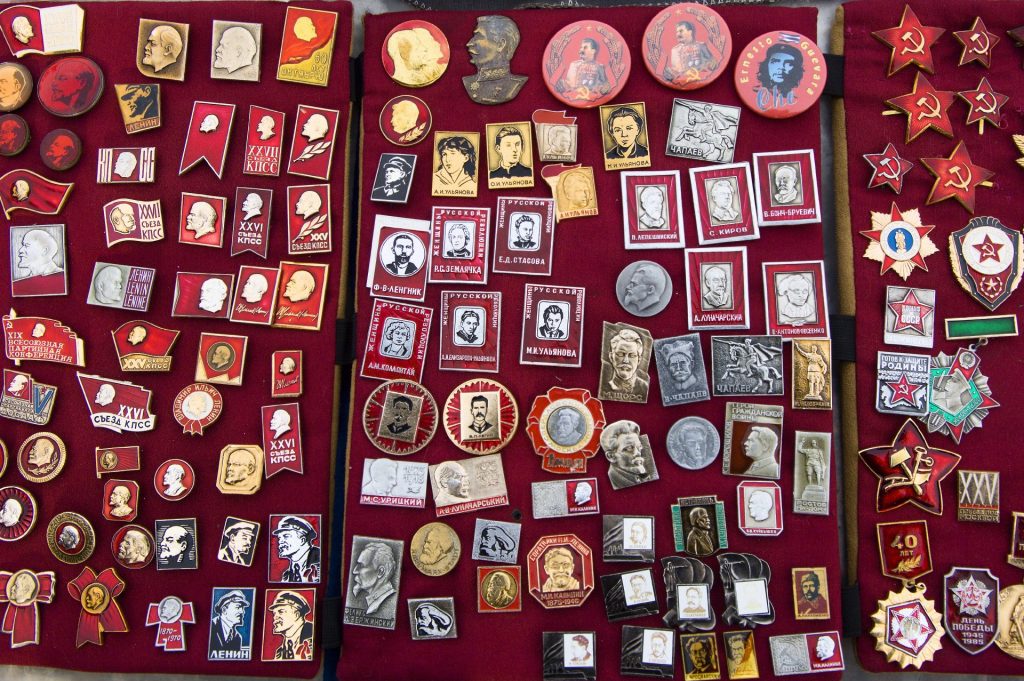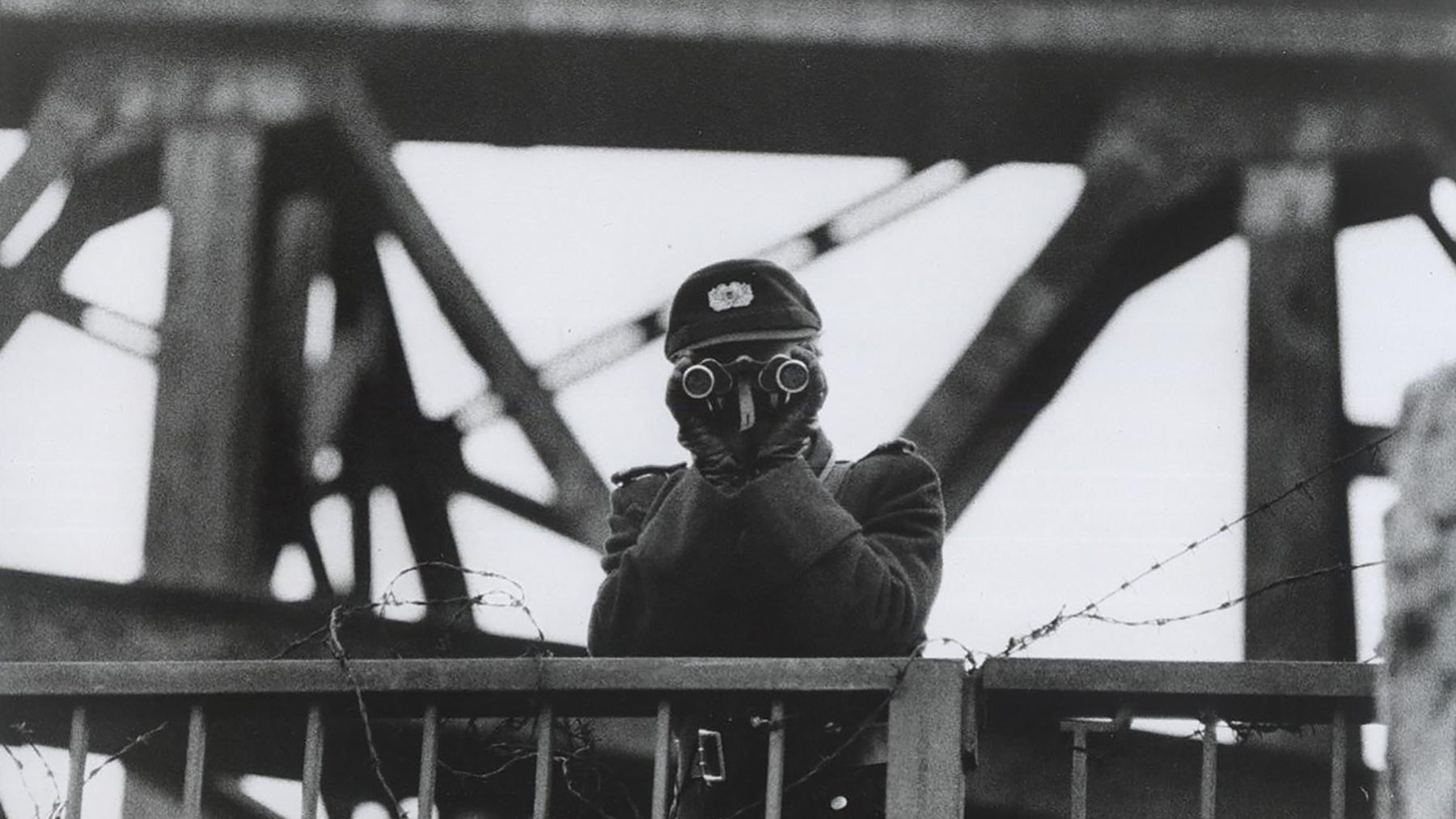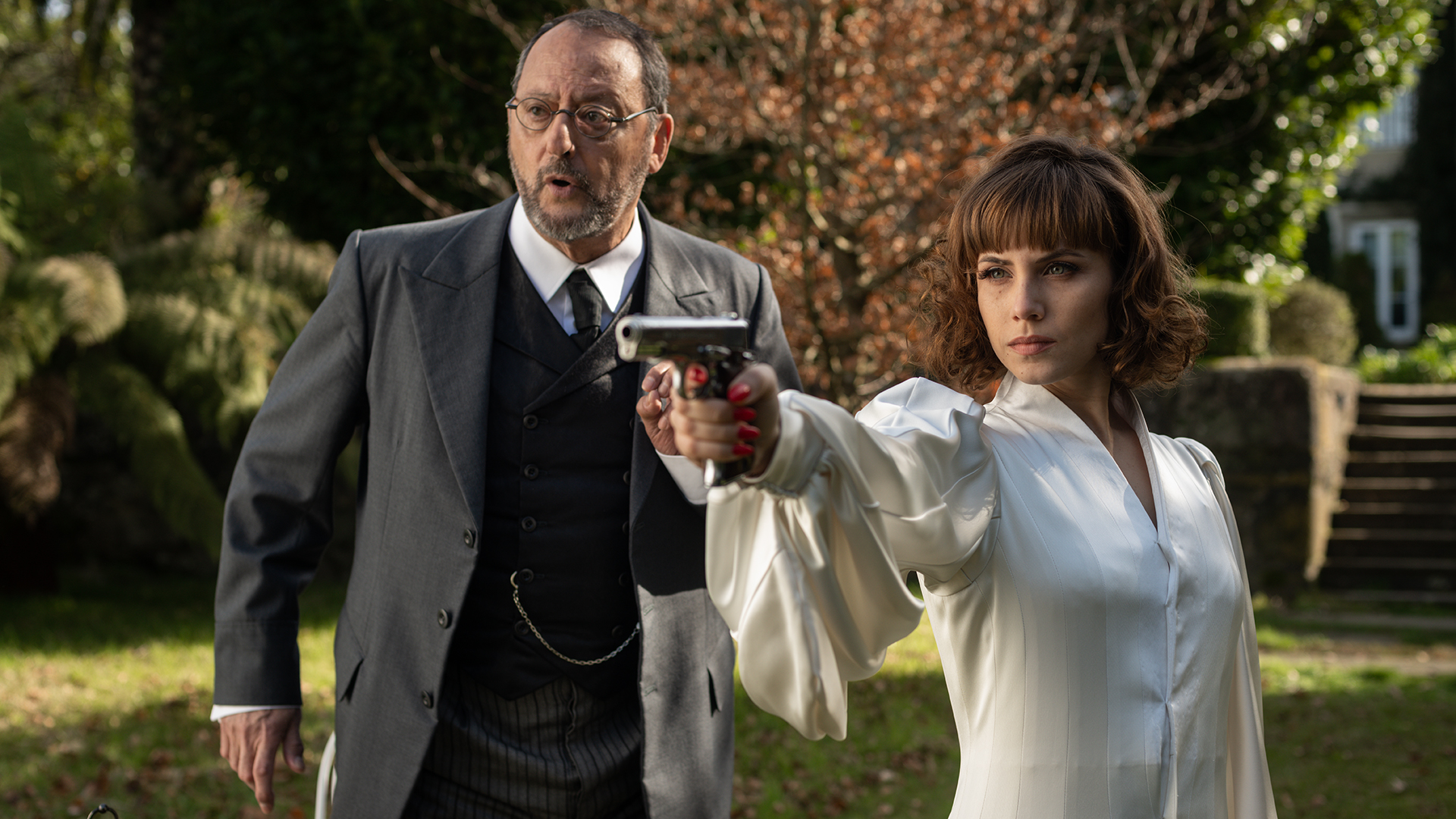Since Russia invaded Ukraine, a wave of de-Sovietisation has swept across the countries of the former USSR. In Latvia, Estonia and Lithuania, statues commemorating Soviet military victories have been removed. In one case a memorial was repainted in the blue and yellow of the Ukrainian flag.
So it seems perverse that, 33 years after the fall of the iron curtain, many older eastern Europeans are still nostalgic for the communist regimes of their youth. What is even more bizarre is that the younger generations share their fascination. Hundreds of shops, e-stores, auction houses and museums are cashing in on the demand for retro furniture, T-shirts, and underground music, produced on cassettes and vinyl albums, just like in the old days.
Much of the merch is for children. Travellers passing through Prague airport cannot miss the giant cuddly toys of Little Mole, or Krteček. Created in 1956 by the Czech animator Zdeněk Miler, the cartoon character appears across eastern Europe in videos and games. As a communist answer to Mickey Mouse, the Mole is thriving in 21st-century capitalism. An original 30cm-high Little Mole plush toy now has a recommended retail price of £108.44.
Other cartoon characters keep the childhood memories alive across central Europe. The east German Sandman is going strong, appearing at bedtime in an animated series and adorning lunchboxes and pyjamas. Zeno the plasticine man still delights Hungarians young and old.
These are all symptoms of ostalgia, nostalgia for the former communist states (ost is German for east). It is a phenomenon with complicated political and psychological roots, according to Dr Karolina Golinowska of Kazimierz Wielki University in Poland.
“The ‘etatism’ which meant that everybody was guaranteed even an unnecessary job by the state was confronted by the wild capitalism of the 90s – no social security, huge unemployment, no professional skills, and the need to change profession. “From this point of view,” says Golinowska, “the bad, which was predictable, was better than the good devoid of any security.”
But even without the rose-tinted glasses, Golinowska argues, the culture of the Poland People’s Republic still has its own artistic merit. “There is a great selection of movies, as well as literature, design, visual arts, and music that was created during the times of PPR and it’s basically good.” This cultural reserve may be part of what has driven interest in cold war Poland among the young.
She cites the poet Czesław Miłosz, who won the Nobel prize for literature in 1980, and the Oscar-winning film director Andrzej Wajda, famous for Katyn, Danton starring Gérard Depardieu and Land of Promise as examples of world-class artists from the period.
In painting, socialist realism has found an unlikely champion in the alt-right guru Jordan Peterson, who has amassed more than 250 artworks depicting Lenin, Marx and visual propaganda from the Soviet Union. Peterson claims that he keeps these images to remind himself of the evils of communism. However, they are also a sound investment that taps into the ostalgia trend. Similar works were valued at up to £600,000 each the last time Sotheby’s held an auction of Soviet art.
At the other end of the price range, £20 will get you a poster of Lenin or a bust of Marx on etsy.com and popular street market souvenirs include Red Army hats, Young Pioneer T-shirts and 1970s football pennants.
On Facebook, collectors of East German memorabilia number almost 5,000. Their posts and podcasts are all in English and many of the followers do not speak a word of German. What makes these souvenirs so covetable?
Zoe from London prefers not to give her full name. Her fascination with communist East Germany started on a school trip to East Berlin in 1991 when she was 14. The country had just been unified.
“It seems to me that talking about the DDR – the German Democratic Republic – is always tinged with sadness. Not just for the brutal things that the country did to some of its citizens and others, but that many East Germans genuinely wanted a better way after the fall of the Berlin Wall, incorporating the good aspects of the GDR.”

Hitij/Getty Images
As a teenager Shane Whaley, founder of the Radio GDR podcast and blog, learned that there were two Germanies through his hobby of stamp collecting. “Then I learned about the Berlin Wall, which confused me as a kid – how can a wall separate a city, a country? I asked for East German pen pals at school, but they only offered introductions to West German kids… Then the wall collapses and a country disappears. At 14 years of age that really knocked me. I mean, how does a country disappear?”
For the Radio GDR producer Matthew Sigley, the attraction was the underground music scene. While playing in a band at the Leipzig Wave Gothik Treffen, Sigley discovered punk rock bands that defied the secret police and played a big part in the collapse of communism. That movement was celebrated in Tim Mohr’s cult history book Burning down the Haus.
Foreigners with a fascination for the former socialist states did not, of course, experience the hardships of living under collective farming, five-year plans, shortages and hunger – to say nothing of the police state, censorship, mass surveillance, torture, imprisonment and certain death for those who tried to escape but failed. Yet even those who did live through all that – the real Ossis or easterners – experience ostalgia, too.
“It was a mild dictatorship,” says Albrecht Weissig, a former East German volleyball coach. He is now unemployed after his two private physiotherapy clinics went bankrupt. “There was definitely torture but not in large numbers. Whoever was stubborn, they would hit them hard. But it was not something that people were constantly aware of. I got on well with my neighbours, I had a large circle of friends and money was not an issue. We always had enough. There was so little to buy!”
Weissig is amused, rather than outraged, by the current row over “ostalgic” ready meals. German supermarket chains are being pilloried for using the GDR flag and emblems to sell tinned stew “like we had in the National People’s Army – NVA – and spaghetti sauce that tastes like it always used to taste”. There are smiling rosy-cheeked Young Pioneers on the label.
Those same soldiers were responsible for patrolling the border with West Germany, where according to the Berlin Wall Foundation at least 600 people died trying to cross into the West. That figure includes those who drowned in the Baltic Sea as well as hundreds who were shot dead.
A piece of the actual Berlin Wall stands outside the House of Terror museum in Budapest, where the Hungarian authorities honour all victims of the former totalitarian regimes, both fascist and communist. More than 1,000 people a day visit the museum, which includes those murdered in the Holocaust as well as the people who suffered under Stalin and his political puppets.
Meanwhile in the centre of the Czech capital, Prague, there is a monument to the victims of communism. It depicts seven human figures walking down a stairway, becoming progressively more damaged and less human-looking. For a more explicit historical perspective, the nearby Museum of Communism combines the terror of the interrogation cell with the cuteness of a child’s bedroom all under one roof.
Germany has several GDR museums as well as shops selling retro toys, 1960s furniture and food. It has also, separately, preserved the horror of its state security – Stasi – torture chambers. There are archives too – thousands of card index and paper files from the GDR, where one in every 11 citizens was a so-called informal worker, or IM, for the Stasi. Every German with a blood relative who lived in the GDR is entitled to look at the files kept by the Stasi on their family members.
The Stasi’s IMs spied on friends, neighbours and even their own children. New curtains, a shorter wait for a car or a telephone, or permission to study at university were some of the rewards given to IMs. The price paid for refusing to cooperate was a long prison term in notorious jails such as Hohenschoenhausen. The prison is now a popular tourist attraction. Many of those jailed dissidents are still alive and some take part in the commemoration, held each year on October 9, recalling the Peaceful Revolution that brought down the iron curtain.
So with all this living proof, and tangible, well-documented and much-visited reminders of the cruel iniquities of communism, how can ostalgia persist? Oddly, the answer lies in a quote attributed to former German chancellor Helmut Kohl, that not everything was bad in the GDR. It was satirised by an East German journalist, the aptly named Wolfgang Mocker, who quipped: “Es war ja nicht alles schlecht, früher. Im Gegenteil. Das meiste ist es noch immer.” (“It was not all bad, back then. On the contrary. Most of it still is.”)
In her book Integriert doch erst mal uns! (“Please integrate us first”), the social inclusion minister for the federal state of Saxony, Petra Koepping, examined the beliefs of Germans from the east and west of the country. Citing the wide pay gap between east and west and the tiny percentage of people from the east in positions of power, Koepping’s book builds up a solid rationale for nostalgia.
It is not surprising that the overnight transformation from a state-run planned economy to turbo-capitalism produced winners and losers. The winners were the few who could rapidly adapt to the new conditions. The rest were, in fact, better off under communism. Among this group, she found widespread resentment, rejection of new ways of working and hostility towards refugees.
What is surprising is that Koepping’s book was published in 2018, almost 30 years after reunification. The latest statistics still show a 26% average wage gap between West and East, rising as high as 41% for jobs such as web design.

Beyond the pay packet, many Germans born in the East recall other advantages of GDR life, for example the relative freedom and equality of women. It was normal for women to pursue their careers – often in what the West regarded as male roles such as chemical engineering or construction. They could combine their jobs with bringing up a family thanks to state-run creches, communal kitchens and laundries, kindergartens, after-school clubs and holiday camps run by the Young Pioneers.
Leonore Hellmich, a graduate and former university administrator, now works as a self-employed cleaner to supplement her alimony. She remarks that the West is only now beginning to catch up with the level of female emancipation she enjoyed under the dictatorship. “Everybody had a job,” she reminisces. “And we all knew each other, neighbours and colleagues and each other’s children, too. We had that solidarity.”
Weissig says that East German women would have scoffed if an employer or a bank manager had insisted that her husband had to co-sign a contract before she could accept a job offer or open a bank account. This was the norm in West Germany until 1977. And he believes the new abortion laws in Poland and the US are “a return to the Middle Ages – in contrast to the GDR, where contraception and abortion were freely available.”
As an example of sexual liberation, Weissig points out that nudity was totally acceptable throughout the long hot summers in the GDR. FKK, Freie Korper Kultur (Free Body Culture) beaches still exist on the Baltic coast, but nowadays naturism is the exception rather than the norm.
“It was not all bad” has become a catchphrase that justifies a continuing obsession with the communist past while keeping it distant, to avoid being labelled reactionary or naive.
It is the title of a hit song by Die Prinzen (The Princes), choirboys who grew up into punk rockers. Tongue-in-cheek, the song’s video goes through the stereotyped images of East Germany – the food shortages, grilling sausage in the garden, nude bathing, the TV censorship, the fall of the Wall. The comments on YouTube show some listeners were reduced to tears and rushed to share the song with all their friends from the East.
Meanwhile, some of their grannies’ generation are reliving their GDR youth in a Dresden care home. Wearing 60s fashions and sitting on retro furniture, the residents can buy East German brands with fake ostmarks in a shop with shelves that are almost bare. The manager, Gunter Wolfram, explains that familiar objects from the past help the seniors to regain their physical and mental capacities.
“Their hands learn to do again what their heads have forgotten,” he notes with approval.
But can the younger generations keep in mind that most of what the communist regimes did was really very bad indeed? Is ostalgic selective amnesia a dangerous fad? As Vladimir Putin strives to re-create a new Soviet Union, Europe would do well to remember the whole story.
Jane Whyatt has worked as a journalist, newsreader and independent producer for the BBC and commercial TV networks



